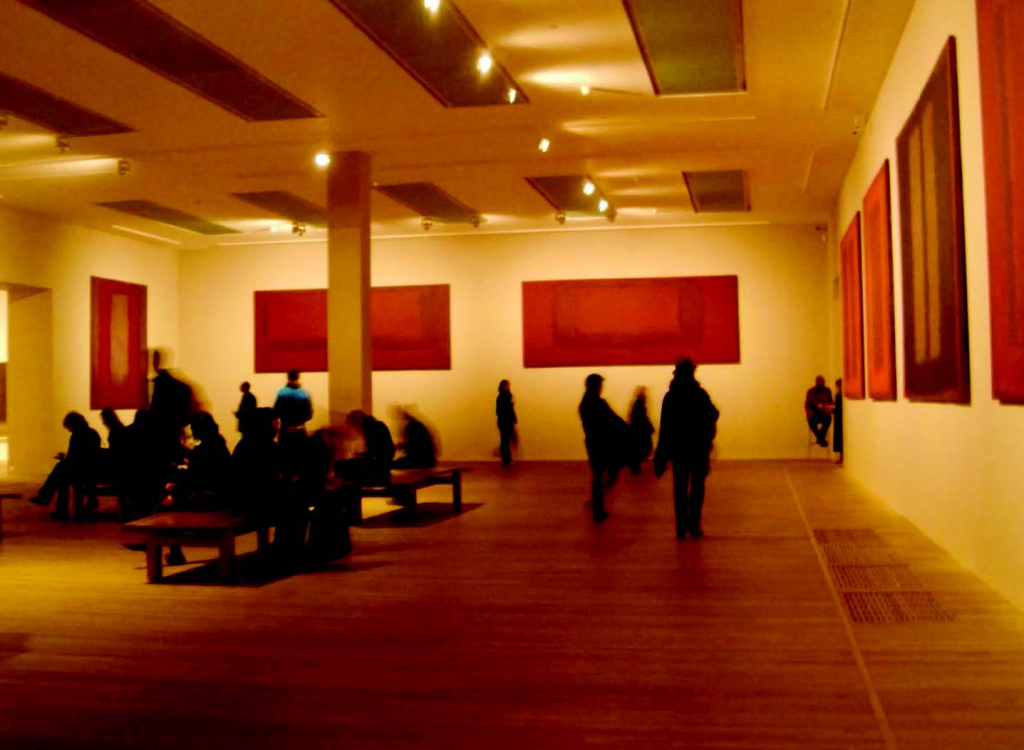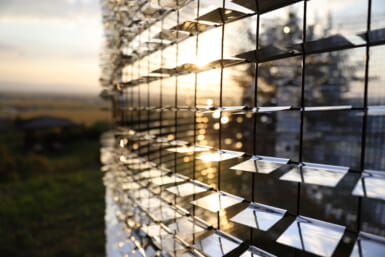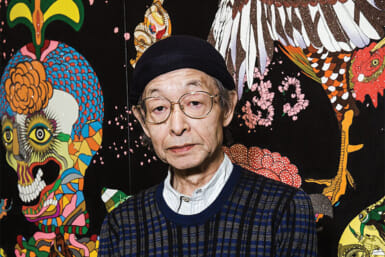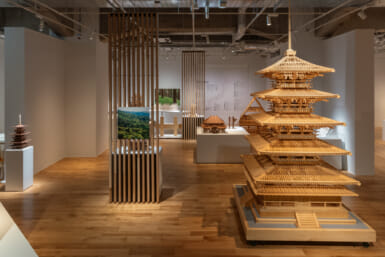by Owen Schaefer
It takes time and dedication to get to the Kawamura Memorial Museum of Art. But when it announced a special Mark Rothko exhibition that would bring together 15 works from a scattered 30-work mural project that was never publicly shown—well, deep down in the squishy, modernist-soft-spot of my heart, I knew I had to go.
Chiba prefecture isn’t a huge leap for Tokyoites, but Sakura station will take a good 90 minutes if your trains work out—and two hours if they don’t. From there, the museum’s free shuttle bus takes another 20 minutes, trundling past gas stations, bamboo groves, and Rothko-shaped rice paddies, until you begin to wonder just where the heck it is that you’re going.
Essentially, this journey will appeal to three kinds of people—early-risers up for a day-trip to see the museum’s sizable collection of impressionist and modernist works; those hoping to catch another ‘once in a lifetime’ art event; and those with a specific love of Rothko’s work. And this work is some of his best.
The American painter’s color-field works—canvases painted with more-or-less rectangular color forms, carefully blended to resist the human inclination to find foreground, background, and form in everything—made Rothko an icon of modernism and have earned the dubious distinction of being some of the most expensive contemporary works on the world’s auction blocks. But the Seagram series—a set of 30 paintings commissioned in 1959 for the exclusive private dining room of the Four Seasons restaurant in New York, may well be the jewel in Rothko’s cantankerous crown.
If a restaurant commission seems an odd fit, that’s because it was. Despite accepting the job, Rothko seemed appalled with it from the start, opposed to the extravagant lifestyles of the restaurant’s clientele. Rothko once confessed to a Harper’s editor, John Fischer, that he hoped the Seagram murals would “ruin the appetite of every son-of-a-bitch who ever eats in that room,” and said that if the restaurant refused to hang the works it would be “the ultimate compliment.”
It was a compliment that would never be paid, however, since it was Rothko himself who refused to go through with it, returning the money and keeping the finished works. In time, the series was split up, with many of the paintings going to a special display room in the Tate Modern and others going to the Kawamura museum, which has also maintained a Rothko room. For this show, the two have been brought together.
For all his petulance, Rothko took the dark, maroon murals absolutely seriously, looking upon them as some of his best work. Arranged tightly on the walls and dimly lit, the red, black, and orange canvases brood and bleed, repel and draw, their contents creating windows and doors that slam shut even as they open.
A second, much smaller room features paintings from the later Black-form series, a quiet and powerful set of works painted in what is very nearly black-on-black with only minor alterations in tint—meditations on solidity and emptiness.
The Kawamura literature makes much of the fact that Rothko had always wanted the Seagram works to be displayed together (though it’s doubtful he ever imagined that location being deep in the Japanese countryside). But what it fails to mention are his strict ideas about how they ought to be shown. Rothko demanded his works to be viewed close up, low to the ground, and in dim natural light. He wanted the viewer to be engaged and almost enveloped in the color—something that won’t be possible here as the main paintings have been placed high above the floor and behind ample no-walk zones.
There is a deliberate, and no doubt self-conscious, grandeur to the arrangement here—a presentation that seems more reverential than contemplative. And it’s hard to escape the feeling that what we are seeing is something like a symphony performed with shuffled and missing pages. But its dark melody will still linger during the long train ride back.









